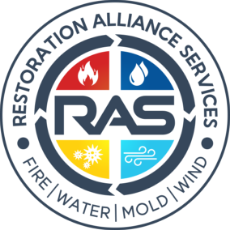 Discover why glycol-contaminated insulation and drywall must be removed after water damage incidents. This blog explains how glycol retains moisture, preventing effective drying and leading to mold growth and structural damage. Learn about the IICRC standards for proper assessment, removal, and replacement of affected materials to ensure a safe and healthy environment. Understanding these steps is crucial for effective restoration and maintaining the integrity of your property. Read on to find out more about handling glycol contamination in building materials.
Discover why glycol-contaminated insulation and drywall must be removed after water damage incidents. This blog explains how glycol retains moisture, preventing effective drying and leading to mold growth and structural damage. Learn about the IICRC standards for proper assessment, removal, and replacement of affected materials to ensure a safe and healthy environment. Understanding these steps is crucial for effective restoration and maintaining the integrity of your property. Read on to find out more about handling glycol contamination in building materials.Why Glycol-Soaked Insulation and Drywall Must Be Removed:
Glycol, commonly found in antifreeze and some industrial fluids, is a moisture-retaining substance that does not dry out on its own. When insulation or drywall becomes contaminated with glycol due to spills or flooding, it can trap moisture indefinitely, leading to persistent dampness. This creates an ideal environment for mold growth, structural damage, and potential health hazards.
According to IICRC (Institute of Inspection, Cleaning and Restoration Certification) standards, porous materials like insulation and drywall contaminated with glycol must be removed and replaced. Simply drying these materials is not sufficient, as the glycol remains embedded within the fibers, continually attracting moisture.
IICRC Standards:
The IICRC S500 Standard for Professional Water Damage Restoration advises that contaminated porous materials should be removed to prevent secondary damage and ensure a safe environment. The standard emphasizes that proper assessment, containment, and removal are crucial steps in the restoration process when dealing with chemical contamination.
Key Steps for Glycol Contamination:
- Assessment: Identify all affected areas and materials.
- Containment: Seal off the contaminated area to prevent cross-contamination.
- Removal: Safely remove and dispose of glycol-soaked insulation and drywall.
- Replacement: Replace with new, uncontaminated materials.
- Verification: Ensure the affected area is free from glycol and moisture before closing up.
Addressing glycol contamination promptly and in accordance with IICRC standards is essential to protect the integrity of the building and the health of its occupants.
